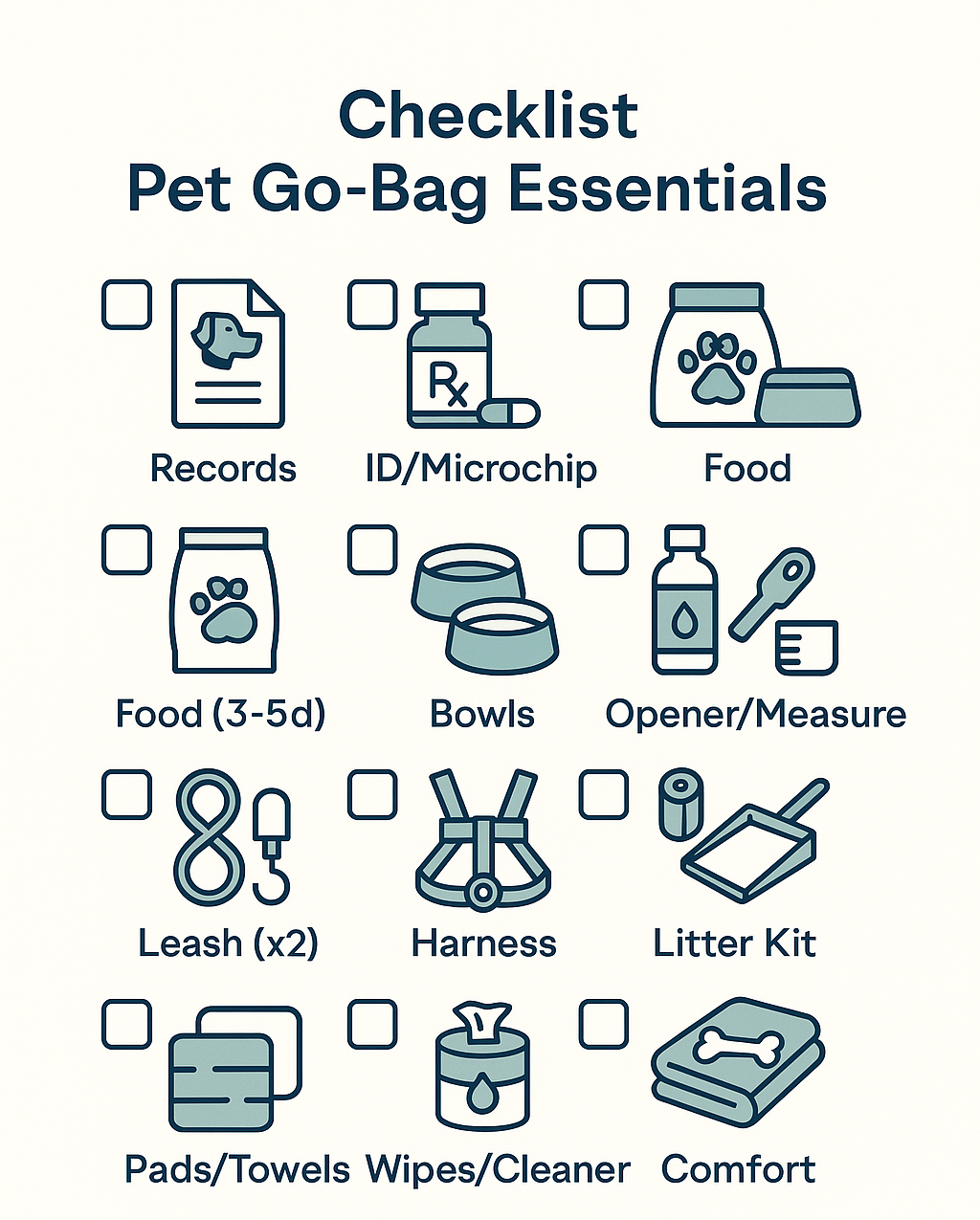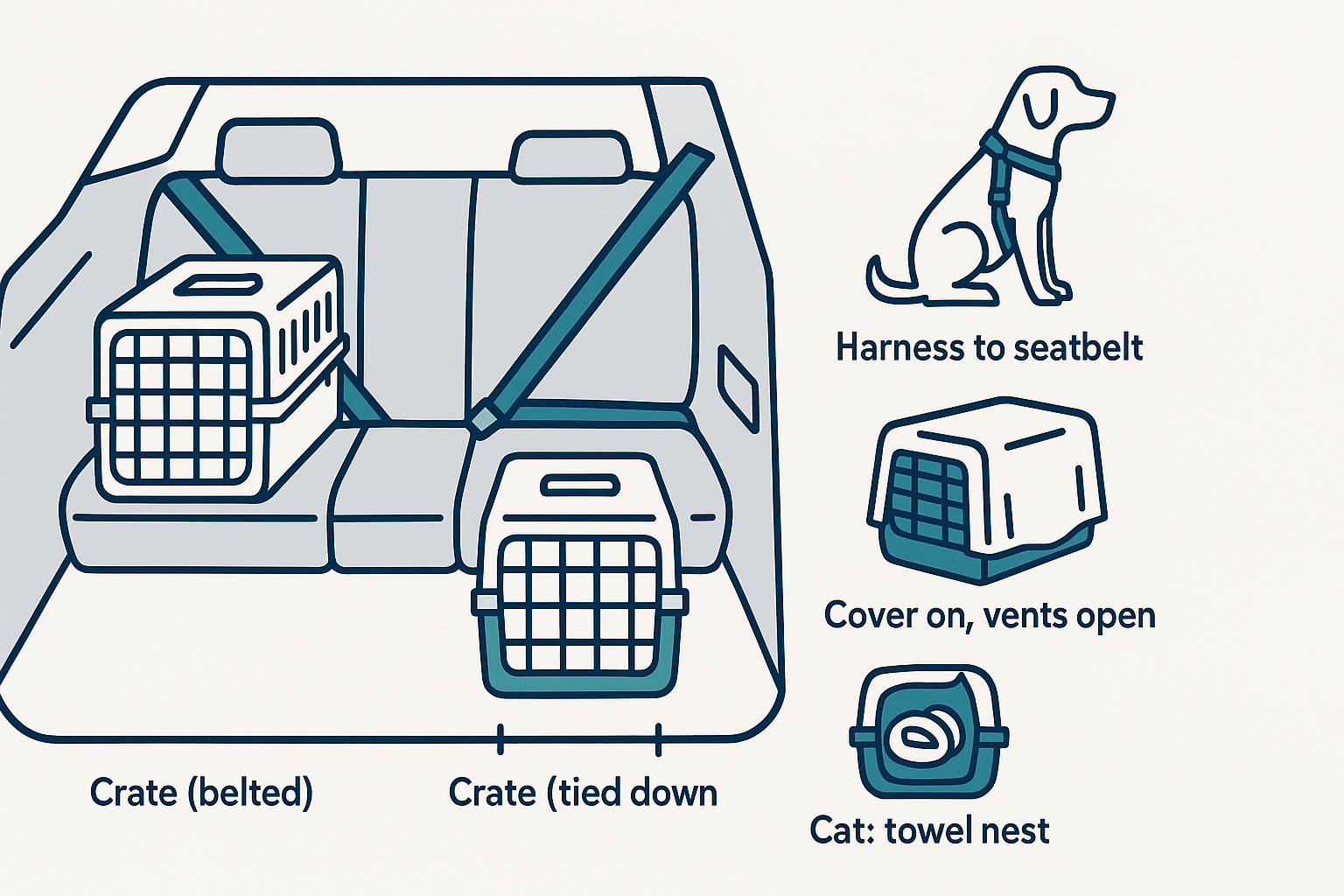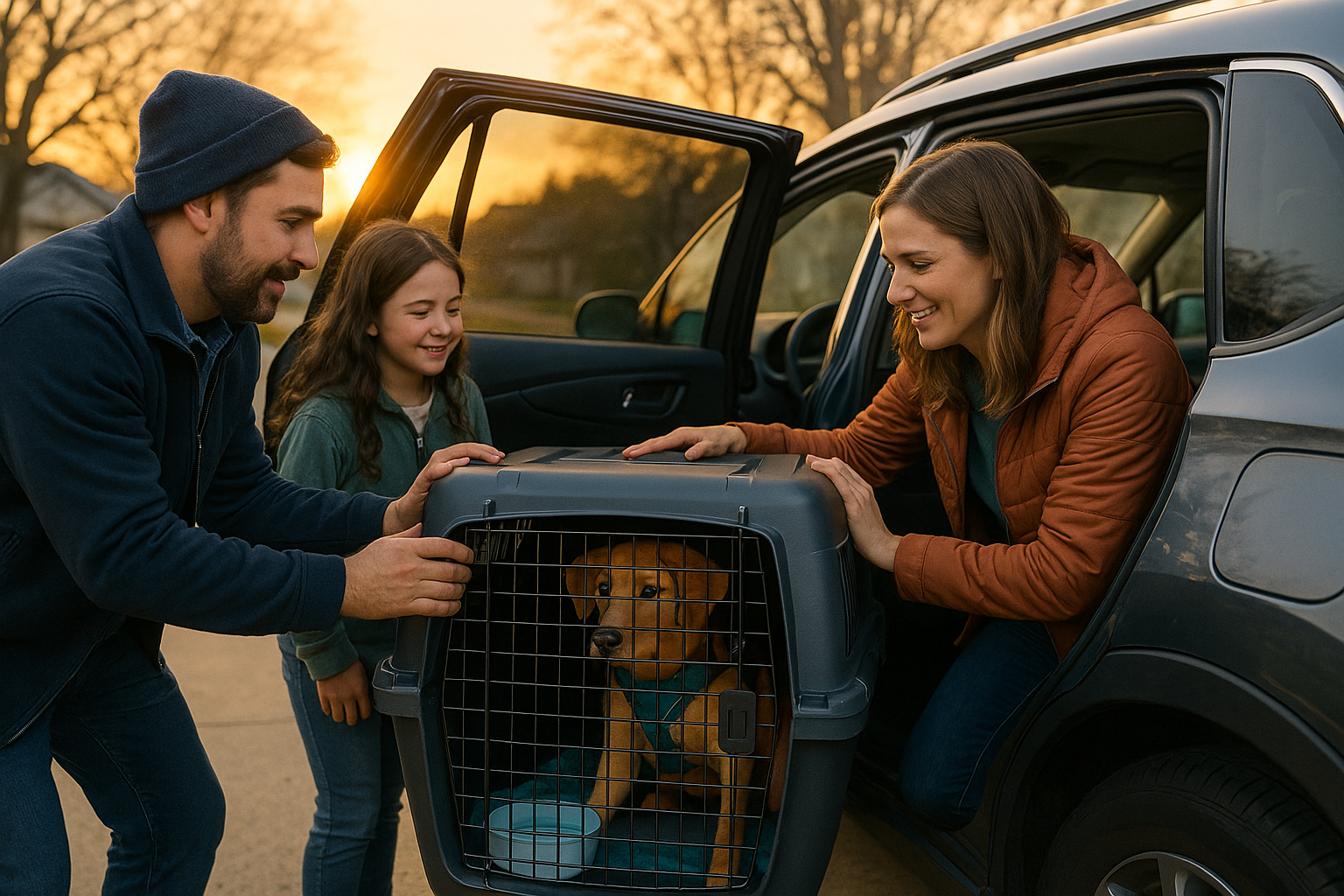Moving with Cats & Dogs: Calming Plans for Long‑Haul Trips
Stress‑less, step‑by‑step plans for families taking pets on a long‑distance move — with legal basics, packing checklists, and a calm travel routine.- Book a vet visit 3–6 weeks out; confirm vaccines, microchip, and any required health papers for your destination.
- Crate‑train early; size the carrier so your pet can stand, turn, and lie down.
- Build a daily travel routine (feed early, water often, stop every 2–3 hours).
- Pack a pet go‑bag: food, meds, bowls, leash, litter, pads, towels, first‑aid.
- Designate a “quiet room” on moving day so pets can’t slip out.
- Never leave pets in parked cars; monitor heat/cold and air quality.
- Choose pet‑friendly stays; keep bedtime and walk/litter times steady.
- Set up a “home base” room first at the new place; ease into full access.
1) Legal & Health Basics (What’s Required?)
Interstate moves: In the U.S., interstate pet requirements are set by the receiving state (dogs/cats). Many states simply expect current rabies vaccination; some ask for a recent Certificate of Veterinary Inspection (CVI), also called a “health certificate.” Always check your destination’s current rules using the USDA’s state‑by‑state tool and speak with your veterinarian about timing and paperwork. International, U.S. territories, or returning to the U.S. with a dog: Rules are stricter. As of 2024–2025, **dogs entering the U.S. must be microchipped and at least 6 months old**, with documentation depending on origin. Review CDC and APHIS guidance before you book tickets. Special case — Hawaii: Hawaii is rabies‑free and operates quarantine programs with strict pre‑arrival steps. If you’re headed to Hawaii (or returning), start early and follow the official checklists closely to avoid long quarantines. Veterinary guidance: Book a check‑up 3–6 weeks before departure. Ask about motion‑sickness options and behavior aids; sedation is **not** routine and should only be used under a vet’s advice. For air travel, leading veterinary guidance discourages tranquilizers in most cases; for driving, your vet can advise safer alternatives and dosages.2) Your 6‑Week Countdown Timeline
6–5 weeks out
- Vet appointment: vaccines, microchip check, refill meds, discuss motion sickness/sedation alternatives.
- Confirm destination rules (CVI timing if applicable).
- Order a crash‑tested harness or crate that allows your pet to stand, turn, and lie down comfortably.
- Book pet‑friendly lodging for overnight stops.
4–3 weeks out
- Crate training: feed in the crate, then close for short sessions; add a worn T‑shirt for scent.
- Practice drives: 10–20 minutes, then lengthen; reward calm behavior.
- Assemble your pet go‑bag (see checklist below).
- Line up a “pet sitter” for moving day doors‑open time.
2 weeks out
- If your state requires a CVI, schedule it inside the required window.
- Move routine earlier: feed breakfast 2–3 hours before car time to reduce car sickness.
- Pack copies (paper + phone photos) of vaccine records, prescriptions, and microchip info.
72–24 hours out
- Freeze a few water bottles (slow melt for the car). Portion meals in labeled bags.
- Check weather for heat/cold, smoke, and storms along the route. Never plan to leave pets in a parked car — even “mild” temps can become dangerous fast.
- Stage a “quiet room” with door sign: Pets inside — please keep closed.
3) Pet Go‑Bag & Car Setup
Pet Go‑Bag Checklist
- Food for entire trip + 2–3 days extra
- Water & bowls (collapsible)
- Medications & preventives; copies of prescriptions
- Leash/harness (backup set), waste bags, ID tags
- Litter, tray, scoop, disposable liners (for cats)
- Bed/blanket, favorite toy, calming pheromone spray or wipes (if advised)
- Towels, puppy pads, cleaning wipes, enzyme cleaner
- First‑aid kit for pets (gauze, bandage, antiseptic, styptic, tweezers)
- Paper copies of vaccine records, CVI (if required), microchip number

Safer Car Layout
Place the crate or carrier on the rear seat or cargo area, secured so it cannot shift. For harness users, attach to a seat‑belt‑compatible restraint. Keep a soft crate cover handy to reduce visual stress; leave vents open for airflow. Cats often prefer a covered carrier with a snug towel “nest.”
Cost Planner (DIY worksheet)
Every move is different, and rates vary by distance, pet size, season, and service level. Rather than publish a one‑size‑fits‑all number, use this quick worksheet to plan your budget and request a tailored quote.- Vet visit + any CVI/endorsement: ______
- Crash‑tested harness/crate upgrade: ______
- Pet‑friendly lodging/fees (nights × nightly rate/fee): ______
- Fuel/charging + extra rest‑stop time: ______
- Supplies (litter, liners, pads, cleaners): ______
- Optional ground pet transport quote: ______
4) Road‑Trip Routine (Stops, Food, Sleep)
- Stops: Pause every 2–3 hours for water, relief, and a 5–10 minute walk or stretch. Keep ID on and leash clipped before doors open.
- Food: Small breakfast 2–3 hours before departure; light dinner after arrival. Offer water at each stop.
- Heat & cold: Never leave pets in a parked car. Even with windows cracked, temps inside a car rise rapidly and can be fatal. In winter, cars cool quickly too. Monitor both temperature and air quality on your route.
- Night routine: Choose pet‑friendly lodging; set up bed, bowl, litter, and a short play/walk, then lights out.
5) Drive vs Fly vs Ground Pet Transport
| Method | Pros | Cons | Best For |
|---|---|---|---|
| Drive yourself | Full control of schedule; frequent breaks; familiar presence reduces stress. | Long hours; weather risks; must manage hotel stops and safe car setup. | Most dogs; many cats with crate training; multi‑pet families. |
| Fly (in‑cabin) | Fastest; pet stays with you if under airline size limits. | Limited slots; carrier size rules; airport stress; breed restrictions. | Small pets used to carriers; shorter flights with mild weather. |
| Fly (cargo) | Fast across long distances; professional handling. | Temperature limits; routing constraints; sedation typically discouraged. | When timing is critical and airline/season fit your pet’s needs. |
| Professional ground pet transport | Door‑to‑door; fewer temperature swings; tailored stops. | Longer transit than flying; availability varies seasonally. | Large breeds, brachycephalic dogs, anxious travelers, multi‑pet moves. |
6) Moving‑Day Game Plan (Doors, Noise, Safety)
- Quiet room: Before crews arrive, place pets in a closed room (bedroom or bathroom) with bed, water, litter/pads, and a door sign.
- Double ID: Microchip + collar tag with your mobile number. Keep a recent photo on your phone.
- Load last: Load the pet crate into the car at departure time — not earlier.
- Walk before wheels turn: Short bathroom break, then into the crate/harness.
- Communication: Tell movers where the quiet room is and who can open that door (ideally, no one).
7) First 72 Hours in the New Home
- Home base room: Set up bed, water, and litter/tray first. Let your pet explore one room, then expand access.
- Routine first: Keep feeding/walk/litter times steady before big house tours.
- New vet: Save a local clinic contact; transfer records within the first week.
- Behavior watch: Appetites often dip for a day; call your vet for prolonged vomiting, diarrhea, or lethargy.
8) Seasonal & Route Considerations
Heat waves: Adjust drive hours (early morning/evening). Pre‑cool the car, shade windows, and plan more water stops. Never leave pets in vehicles — temperatures spike fast even with windows cracked. Winter: Pack extra blankets; watch for ice melt on paws; warm the car before loading. Smoke & air quality: If wildfires or dust affect your route, shorten outdoor breaks and keep carriers covered with breathable fabric. Hawaii/Island moves: Start paperwork months ahead per Hawaii DOA checklists to qualify for direct airport release rather than full quarantine. Tools: NWS heat & vehicles, CDC Heat & Pets, and USDA APHIS Pet Travel.Where AFM Fits In
- Coordinated Pet Transport Services with pet‑friendly routes.
- Long‑Haul Moving teams that build your schedule around pet routines.
- Moving Tips Library with printable checklists.
- Crate & Specialty Packing for custom carriers and fragile pet gear.
- Military Moving Services (PCS support, pet coordination).
- Temperature‑Controlled Storage for pet supplies that can’t ride in the truck.
- Route‑specific research if you’re going, for example, Florida to Colorado or Florida to Austin.



